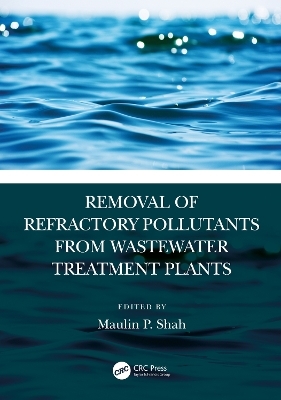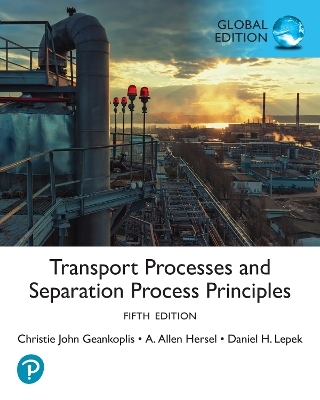
Removal of Refractory Pollutants from Wastewater Treatment Plants
CRC Press (Verlag)
978-1-032-06908-1 (ISBN)
Features:
Examines the fate and occurrence of refractory pollutants in wastewater treatment plants (WWTPs) and the potential approaches for their removal.
Highlights advanced remediation procedures involving various microbiological and biochemical processes.
Assesses and compares the potential application of numerous existing treatment techniques and introduces new, emerging technologies.
Removal of Refractory Pollutants from Wastewater Treatment Plants is suitable for practicing engineers, researchers, water utility managers, and students who seek an excellent introduction and basic knowledge in the principles of environmental bioremediation technologies.
Removal of pharmaceuticals from wastewater using nanomaterials.
Industrial wastewater treatment and reuse: Analysis and novel approaches.
Prospects for exploiting microbes and plants for bioremediation of heavy metals.
Application of UV/periodate advanced oxidation process for the degradation of persisting organic pollutants: Influence of water quality.
Water Reuse and Recycling Systems: A Great Rejuvenation to Environment.
Treatment of pharmaceutical compounds present in wastewaters using microbial fuel cells.
Molecular Advances in bioremediation of hexavalent chromium from soil and wastewater.
Fenton-like degradation of organic pollutants using rice husk-based catalysts.
Activated Sludge Process for refractory pollutants removal.
Microbial removal of toxic chromium for waste water treatment.
Bioremediation of Cr (VI) contaminated soil using Bacteria.
Phytoremediation for the treatment of various types of pollutants: A multi-dimensional approach.
Recent technological advances for tannery wastewater treatment.
Sustainable Bioremediation Strategies to Manage Environmental Pollutants.
Viability of membrane separation technique in detoxification of recalcitrant pollutants.
Treatment of emerging water pollutants by Fenton and modified Fenton processes.
Advanced Technologies for Removal of Refractory Contaminants from Pulp and Paper Mill Wastewater.
Challenges pertinent to phytoremediation: a future prospect.
Membrane Based Technologies for removal of toxic pollutants.
Microalgae-based Bioremediation of Refractory Pollutants in Wastewater.
Photo-assisted Fenton degradation of organic contaminants under visible-light illumination.
Microbial fuel cells for simultaneous wastewater treatment and energy generation: A comprehensive Review.
Phytoremediation: An eco-friendly and sustainable approach for removal of toxic heavy metals.
Biomembrane based technology for efficient removal of industrial effluents.
Advances in photooxidation of nitro organic explosives present in aqueous phase.
Cellulose based nanoadsorbents for waste water remediation.
Application of green bioremediation technology for refractory and inorganic pollutants treatment.
Role of enzymes in the bioremediation of refractory pollutants.
Microalgae – A natural tool for water quality improvement.
| Erscheinungsdatum | 03.09.2021 |
|---|---|
| Zusatzinfo | 47 Tables, black and white; 75 Line drawings, black and white; 8 Halftones, black and white; 83 Illustrations, black and white |
| Verlagsort | London |
| Sprache | englisch |
| Maße | 178 x 254 mm |
| Gewicht | 1075 g |
| Themenwelt | Technik ► Umwelttechnik / Biotechnologie |
| ISBN-10 | 1-032-06908-2 / 1032069082 |
| ISBN-13 | 978-1-032-06908-1 / 9781032069081 |
| Zustand | Neuware |
| Informationen gemäß Produktsicherheitsverordnung (GPSR) | |
| Haben Sie eine Frage zum Produkt? |
aus dem Bereich


